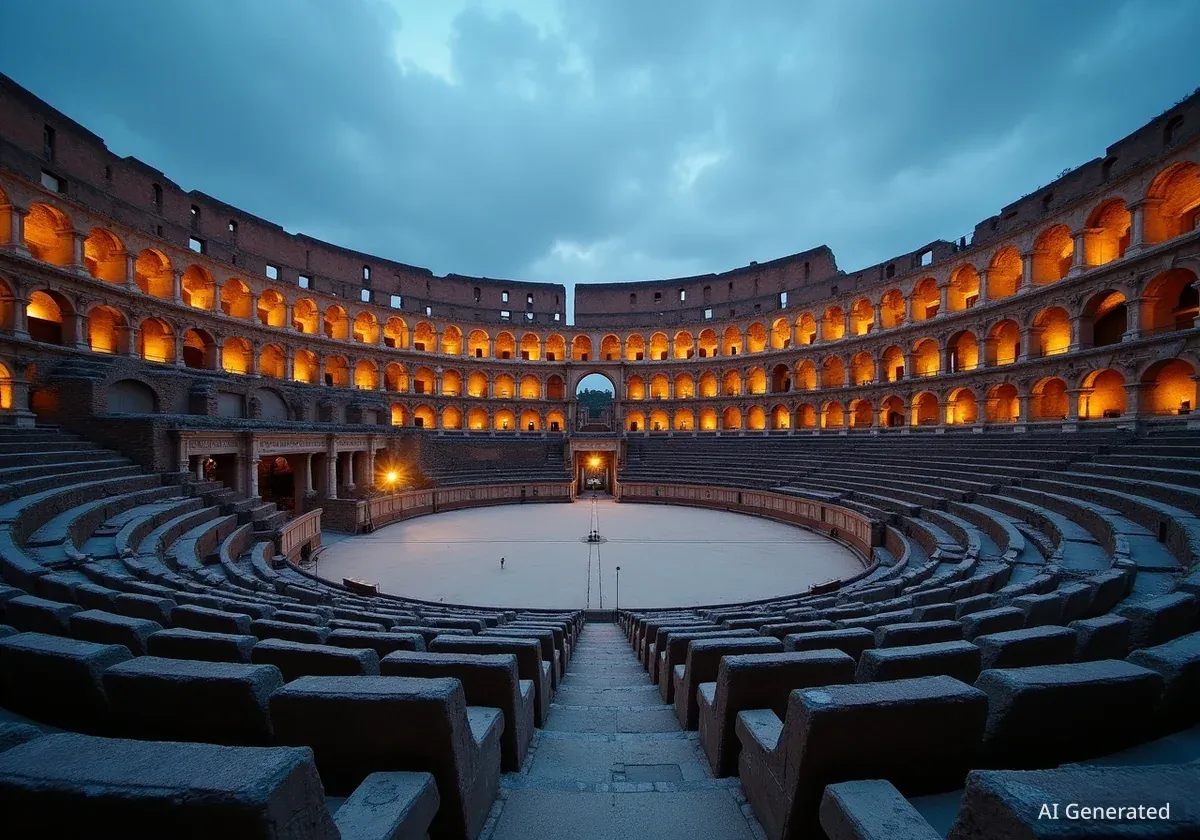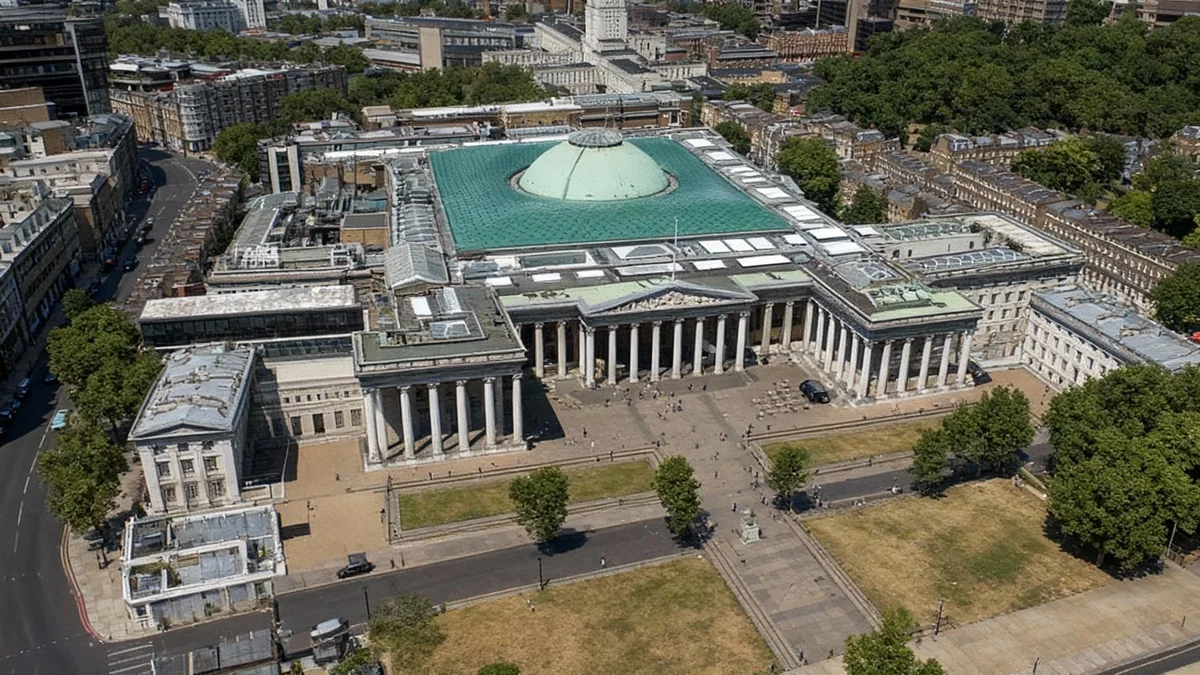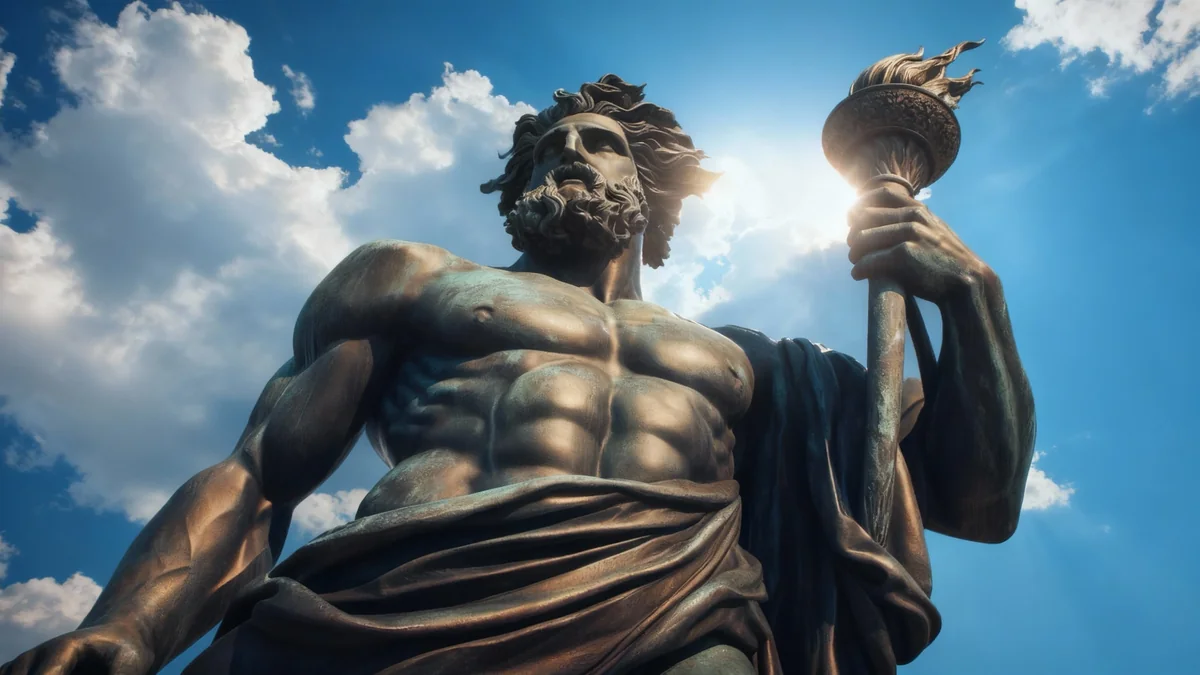Rome's Colosseum, an iconic nearly 2,000-year-old amphitheater, will not host electronic dance music parties. Simone Quilici, the newly appointed director of the Archaeological Park of the Colosseum, has clarified his vision for future events, emphasizing cultural enrichment and careful crowd management for the historic site.
Quilici, who took over on October 20, 2025, aims to introduce a range of performances, including acoustic concerts, jazz, poetry readings, dance, and theater productions. These events will respect the Colosseum's status as a sacred and historically significant space.
Key Takeaways
- No electronic dance music (EDM) parties will be held at the Colosseum.
- Future events will focus on acoustic music, jazz, poetry, dance, and theater.
- Historical reenactments of gladiatorial battles, based on academic research, are also planned.
- The director aims to disperse tourist crowds to other adjacent Roman Forum and Palatine Hill sites.
- First new performances are expected in at least two years.
Setting the Record Straight on Colosseum Events
Following an interview with an Italian newspaper, social media buzzed with rumors of "massive raves" at the Colosseum. AI-generated images of vibrant light beams over the ancient arena quickly spread, causing concern among archaeologists, locals, and even electronic music fans.
Many expressed dismay at the potential desecration of a vital piece of cultural heritage. Concerns also arose about the structural impact of heavy bass on the ancient building, which continues to reveal new discoveries, such as an emperor's secret passage set to open on October 27.
"The music must be carefully controlled. I mentioned certain artists — not by accident — who haven’t been ‘rock’ for some time, who play calm music and attract a calm audience, because the important thing is that it’s not a wild crowd," Simone Quilici stated in his first interview with foreign media.
Quilici, 55, emphasized that any events must treat the Colosseum as a "sacred space." The amphitheater holds deep religious significance, hosting the Via Crucis (Way of the Cross) procession during Easter, traditionally led by the Pope.
Colosseum Visitor Numbers
- Almost 9 million visitors in the last year.
- This marks an increase from 7 million the previous year.
- The site is often at maximum capacity, even outside peak season.
Planned Performances and Cultural Activities
The director clarified that he joked about "rock in moderation," meaning a more subdued musical experience. He suggested acoustic or jazz performances, citing Sting as an example of an artist whose music would fit the venue's solemnity.
Beyond music, plans include expanding the existing small platform within the arena to accommodate poetry readings, dance performances, and theater productions. These activities aim to enrich the visitor experience and connect tourism with deeper cultural engagement.
Historical Context
The Colosseum, built nearly 2,000 years ago, was primarily used for gladiatorial contests and public spectacles. Today, it stands as a powerful symbol of ancient Rome and a UNESCO World Heritage site, drawing millions of visitors annually.
Historical reenactments of gladiatorial battles are also on the agenda. These will be rooted in academic research, ensuring scientific accuracy. Quilici differentiates these from the poorly costumed centurions who often harass tourists for payment outside the Colosseum.
He welcomes activities that reflect the daily life of past eras with a high level of scientific accuracy. The first of these concerts and performances are expected to debut in at least two years.
Addressing Over-Tourism and Site Congestion
The Colosseum is one of Rome's most visited sites. Last year, it welcomed almost 9 million visitors, a significant increase from 7 million the year before. Even in October, typically outside the high summer tourist season, the site remains packed.
This high volume is partly due to the Vatican's Jubilee year, a quarter-century event that attracts large groups of pilgrims. Quilici notes that the Colosseum, along with Vatican City, is one of only two must-see spots for short-staying tourists, often reaching maximum capacity.
"Unfortunately, as everyone knows, tourism is a commercial activity — an industry that does not always connect with culture," Quilici observed from the Colosseum’s uppermost balcony. He believes cultural activities will enrich the site, making it more than just a place to visit, but also a place to experience art.
Encouraging Exploration Beyond the Colosseum
A major ambition for Quilici's tenure is to encourage tourists to explore other nearby historical sites. The Archaeological Park of the Colosseum includes the Roman Forum, the heart of ancient Roman society, and Palatine Hill, where Rome was founded and emperors resided.
Tickets for the park last 24 hours and cover all three destinations. However, park data reveals that one-third of ticket buyers visit only the Colosseum, often leaving without exploring the other significant ruins.
- Roman Forum: The central area of ancient Rome, home to important government buildings.
- Palatine Hill: One of the seven hills of Rome, considered the most ancient part of the city.
With tourist stays in Rome increasing to four days from two and a half last year, there is a greater opportunity to use the Colosseum as a starting point for wider exploration. Quilici wants visitors to discover less-visited but equally important historical areas.
Nearby attractions like the Circus Maximus, famous for ancient chariot races, and the Appian Way, a UNESCO World Heritage site known as "the queen of roads," are often overlooked. Both the Circus Maximus and Appian Park, which Quilici previously administered, offer free admission.
Future Vision: Connecting Rome's Ancient Heart
Quilici envisions creating new access points and connections between the archaeological islands currently separated by busy roads. This initiative aims to better manage crowds and establish a consolidated area for exploration.
He emphasizes that this is a collective effort requiring cooperation from various administrations. The goal is to restore life to the heart of Rome through management decisions, such as limiting traffic, rather than costly infrastructure projects.
"It’s more a matter of management than of infrastructure costs. Choices that sometimes can be simple decisions like limiting traffic — not necessarily involving major expenses, but rather a courageous choice to restore life to the heart of the city of Rome," Quilici explained.
This holistic approach seeks to transform how visitors experience Rome's ancient heritage, moving beyond a single iconic landmark to a broader appreciation of the city's rich history and cultural offerings.





